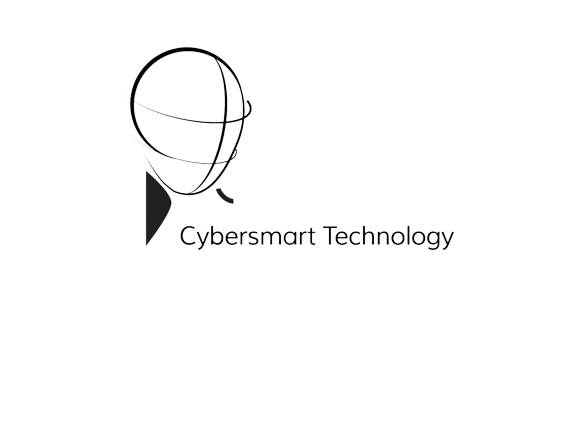Empowering Business Leaders: Safeguarding
Sensitive Data in the Digital Age
In today’s digital landscape, business leaders must adopt a proactive stance towards cybersecurity to ensure the protection of sensitive data and fortify their systems. The ever-present threat of cyberattacks and data breaches looms large, carrying the potential for significant financial losses and reputational harm. To navigate this perilous terrain, here are essential steps that business leaders should undertake:
1. Comprehend Your Cyber Risks The first line of defense begins with understanding the diverse spectrum of cyber risks. These risks encompass everything from malicious actors exploiting vulnerabilities to inadvertent data breaches resulting from employee errors. A comprehensive assessment of potential threats equips leaders to prepare effectively and respond to incidents with precision.
2. Enforce Robust Access Control Measures Access control is the cornerstone of data security. It involves the meticulous restriction of access to systems, data, and networks, permitting entry only to those individuals who require such access for their roles. By implementing stringent access controls, leaders can minimize unauthorized breaches.
3. Harness the Power of Data Encryption Encryption stands as an impregnable shield against cyber intruders. It renders data inaccessible and indecipherable, even if a breach were to occur. By employing encryption, organizations fortify their defenses, ensuring that sensitive information remains beyond the reach of hackers.
4. Educate Your Workforce in Cybersecurity Awareness Human error remains a prominent vulnerability in cybersecurity. A single inadvertent click on a malicious link or divulgence of confidential information can imperil an entire organization. Business leaders must prioritize cybersecurity awareness training to empower employees with best practices and vigilance against potential threats.
5. Implement Multifactor Authentication (MFA) Multifactor Authentication is a formidable barrier against unauthorized access. It mandates the provision of multiple forms of authentication, such as a password and a verification code sent via SMS or email. This additional layer of security significantly heightens the difficulty for attackers attempting to breach accounts.
6. Stay Vigilant: Monitor Cybersecurity Threats The cyber threat landscape is in perpetual flux, with malicious actors continually adapting and refining their tactics. Business leaders must remain vigilant by staying abreast of the latest cybersecurity threats and trends. This awareness equips organizations to proactively defend against emerging risks.
7. Foster a Culture of Cybersecurity Leadership extends beyond policies and technologies; it permeates the organizational culture. Business leaders should champion security awareness within their teams. This can be achieved through the provision of training materials, including live videos and presentations, and by simulating phishing or malware attempts to evaluate employees’ adherence to cybersecurity precautions.
Conclusion: Forging a Secure Future In an era where the digital landscape teems with threats, business leaders must embrace their role as stewards of cybersecurity. By comprehending risks, enforcing access controls, employing encryption, educating their workforce, implementing MFA, staying vigilant, and fostering a culture of cybersecurity, leaders not only safeguard sensitive data but also fortify the foundations of trust upon which their organizations thrive. Together, with a collective commitment to cybersecurity, we can forge a future where data remains secure and businesses continue to flourish.
1. Comprehend Your Cyber Risks The first line of defense begins with understanding the diverse spectrum of cyber risks. These risks encompass everything from malicious actors exploiting vulnerabilities to inadvertent data breaches resulting from employee errors. A comprehensive assessment of potential threats equips leaders to prepare effectively and respond to incidents with precision.
2. Enforce Robust Access Control Measures Access control is the cornerstone of data security. It involves the meticulous restriction of access to systems, data, and networks, permitting entry only to those individuals who require such access for their roles. By implementing stringent access controls, leaders can minimize unauthorized breaches.
3. Harness the Power of Data Encryption Encryption stands as an impregnable shield against cyber intruders. It renders data inaccessible and indecipherable, even if a breach were to occur. By employing encryption, organizations fortify their defenses, ensuring that sensitive information remains beyond the reach of hackers.
4. Educate Your Workforce in Cybersecurity Awareness Human error remains a prominent vulnerability in cybersecurity. A single inadvertent click on a malicious link or divulgence of confidential information can imperil an entire organization. Business leaders must prioritize cybersecurity awareness training to empower employees with best practices and vigilance against potential threats.
5. Implement Multifactor Authentication (MFA) Multifactor Authentication is a formidable barrier against unauthorized access. It mandates the provision of multiple forms of authentication, such as a password and a verification code sent via SMS or email. This additional layer of security significantly heightens the difficulty for attackers attempting to breach accounts.
6. Stay Vigilant: Monitor Cybersecurity Threats The cyber threat landscape is in perpetual flux, with malicious actors continually adapting and refining their tactics. Business leaders must remain vigilant by staying abreast of the latest cybersecurity threats and trends. This awareness equips organizations to proactively defend against emerging risks.
7. Foster a Culture of Cybersecurity Leadership extends beyond policies and technologies; it permeates the organizational culture. Business leaders should champion security awareness within their teams. This can be achieved through the provision of training materials, including live videos and presentations, and by simulating phishing or malware attempts to evaluate employees’ adherence to cybersecurity precautions.
Conclusion: Forging a Secure Future In an era where the digital landscape teems with threats, business leaders must embrace their role as stewards of cybersecurity. By comprehending risks, enforcing access controls, employing encryption, educating their workforce, implementing MFA, staying vigilant, and fostering a culture of cybersecurity, leaders not only safeguard sensitive data but also fortify the foundations of trust upon which their organizations thrive. Together, with a collective commitment to cybersecurity, we can forge a future where data remains secure and businesses continue to flourish.
